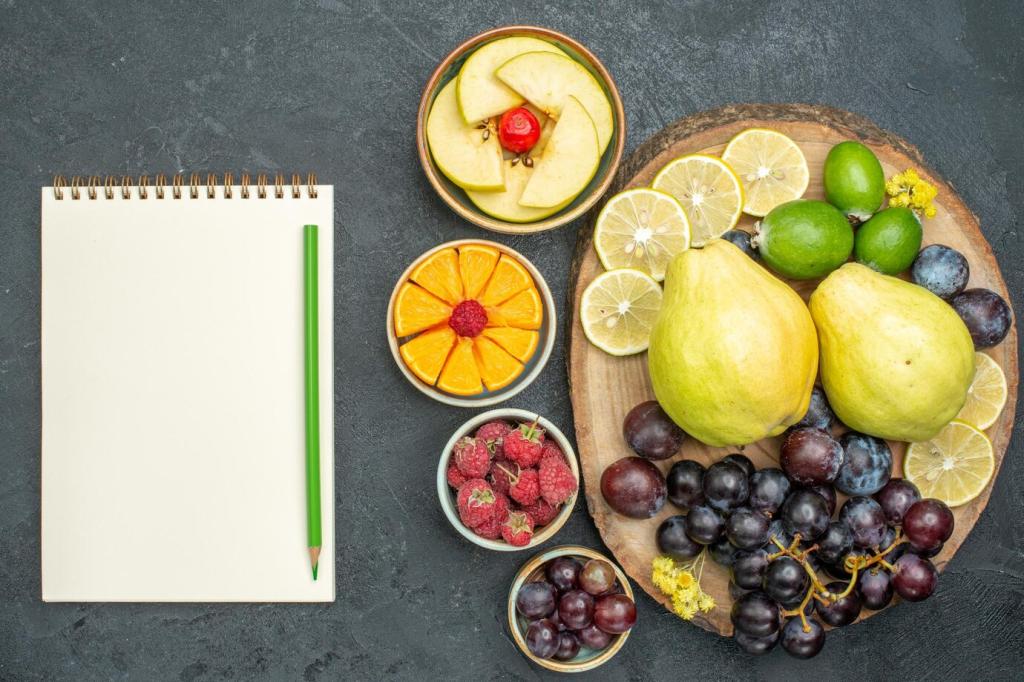Chosen theme: Meal Planning Strategies for Muscle Gain and Recovery. Welcome to your practical, encouraging guide to building strong plates and stronger bodies. Here you’ll find science-backed tips, real stories, and smart planning frameworks to help you eat with purpose, lift with energy, and recover faster. Subscribe for weekly meal prep ideas, adaptable templates, and community check-ins that keep you consistent and confident.

Protein Targets That Actually Work
Aim for roughly 1.6–2.2 grams of protein per kilogram of body weight daily, spread across 3–5 meals. Hit 25–40 grams of high-quality protein per meal with around 2–3 grams of leucine to maximize muscle protein synthesis without wasting effort or appetite.
Carbohydrates for Training Power and Refill
Use carbs strategically to fuel hard sessions and replenish glycogen afterward. Most lifters thrive at 3–7 grams per kilogram, scaled to volume and goals. Favor fiber-rich options away from training and quicker-digesting carbs before and after lifting for smoother energy.
Fats for Hormones and Satiety
Keep dietary fat around 20–35% of total calories to support hormones, joint comfort, and meal satisfaction. Include omega-3 sources like salmon, sardines, or flax, and cook with olive oil or avocado oil to stabilize appetite and avoid needless snacking.
Pre-Workout Meal Timing and Composition
Eat a balanced meal 2–3 hours before training with lean protein, moderate low-fiber carbs, and minimal fats. If short on time, grab a smaller snack 45–60 minutes out, like Greek yogurt and a banana, to arrive energized, not heavy.
Intra-Workout Support for Long Sessions
For sessions exceeding 75–90 minutes, consider quick carbs like a sports drink or diluted juice to maintain output. Keep fluids steady, sip between sets, and avoid high-fiber choices mid-session to protect focus and digestion when intensity climbs.
Post-Workout Recovery Priorities
Within two hours post-lift, prioritize 25–40 grams of protein and a serving or two of carbs to kick-start repair and glycogen restoration. Add electrolytes if sweaty, and include colorful produce for micronutrients that quietly accelerate recovery.

Micronutrients, Hydration, and the Hidden Edge
Vital Micronutrients for Strength
Prioritize iron, magnesium, zinc, calcium, and vitamin D through food first: leafy greens, legumes, dairy or fortified alternatives, and fatty fish. These nutrients support oxygen transport, muscle contractions, and bone strength—quietly amplifying every rep.
Hydration and Electrolyte Balance
Drink to thirst plus an extra glass around workouts. If you sweat heavily, include sodium and potassium via salty foods, potatoes, or electrolyte tabs. Clear, pale urine is a quick check that you’re hydrating enough for training intensity.
Smart Supplement Minimalism
Focus on proven basics: creatine monohydrate, whey or a plant protein if needed, and vitamin D if deficient. Supplements complement meal planning; they do not replace consistent eating, varied produce, or the skill of timing nutrients.
A Practical Week: Templates and Grocery Strategy
Rotate three proteins, two carb bases, and unlimited veggies. Example: salmon, chicken, tofu; rice and potatoes; broccoli, peppers, spinach. Map these across lunches and dinners, then swap sauces—teriyaki, chimichurri, tahini—to keep flavors fresh.



Personalization: Preferences, Plant-Based, and Tolerances
Combine legumes, grains, and soy for complete amino acid coverage. Think tempeh with quinoa, lentils with rice, or tofu with buckwheat. Fortified plant milks and nutritional yeast add extra protein and micronutrients without complicating prep.
Personalization: Preferences, Plant-Based, and Tolerances
If lactose is tricky, use lactose-free milk, hard cheeses, or yogurt with lactase. For gluten-free carbs, lean on rice, potatoes, corn tortillas, quinoa, and certified oats to keep fuel high and digestion calm around workouts.
Recovery Stories, Accountability, and Next Steps
Maya plateaued for months, then committed to a simple template: 30 grams protein per meal and carbs bracketing training. In eight weeks, her squat rose 15 kilograms, and soreness dropped—proof that steady meal planning multiplies your hard work.
Recovery Stories, Accountability, and Next Steps
Log daily protein, pre/post-workout carbs, hydration, sleep hours, and training quality. Review trends weekly and adjust one variable at a time. Share your template in the comments so we can refine it together with real-world feedback.


